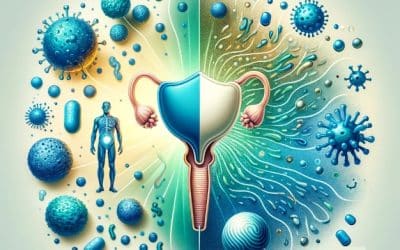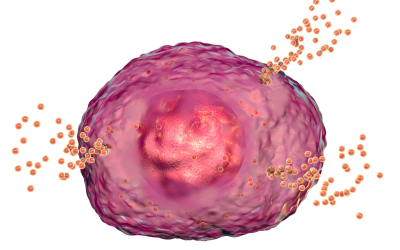The term antioxidant paradox refers to the theory that giving large doses of antioxidants to human subjects have little to no preventative/ therapeutic effect, as evidenced by recent studies (Halliwell, 2013). Antioxidants supplementation is a popular intervention in nutrition and health, and it is based on the idea that reactive oxygen species (ROS) play a role in human diseases by causing oxidative stress or damage to the tissues of the human body. “The concept that ‘antioxidant is good, more antioxidant is better’ seems to be embedded in the mind of many members of the public (Halliwell, 2013). However, in recent years, the paradigm regarding “more is better” is changing to become more congruent with the emerging evidence in their involvement in cellular defense mechanisms having a positive role as well in immunology and human health.
What are antioxidants and why are they important?
Antioxidants are defined as substances that, when present at low concentrations delay or prevent oxidative damage caused by reactive oxygen species (ROS). Antioxidants are widely used in the food industry due to their perceived health benefits. Benefits of antioxidants are based on the belief that:
- ROS can cause oxidative damage
- Oxidative damage causes disease
- Administering antioxidants will diminish oxidative damage and thus disease
Since high doses of ROS can be deleterious, antioxidants play a key role in the equilibrium between oxidation and antioxidation processes. “Oxidative stress can cause cellular dysfunction by e.g. inducing changes in gene expression, protein expression, cellular signaling, membrane fluidity, potentially resulting in cell death” (Boutcher, 2011). As a result, dietary antioxidants play an important role in reinforcing our antioxidant system to quench the excess of oxygen metabolites.
What are some of the adverse effects of antioxidants?
Antioxidant supplements can act oxidative stress inducers when consumed at mega doses, and can have side effects like any other conventional drug (Pham-Huy, He, & Pham-Huy, 2008). ROS are by-products of oxygen metabolism and have historically been associated with damaging effects on cells, such as damage to lipids, protein, and DNA (Holley, Bakthavatchalu, Velez-Roman, & St Clair, 2011). However, ROS are also vital mediators in various key cellular processes, such as cell adhesion, apoptosis, healthy immune response and cell growth and differentiation (Holley et al., 2011). ROS are important second messenger in intracellular signaling, therefore, the balance between oxidation and antioxidation (redox balance) is important for a healthy immune system (Bouayed & Bohn, 2010). At low doses, ROS play a critical role in many physiological functions such as cellular signaling, gene expression, immune response and antioxidative defense mechanism (Bouayed & Bohn, 2010). “In cellular redox, the double-edged effect does not only concern ROS, but also antioxidants” (Bouayed & Bohn, 2010). In fact, high doses of exogenous antioxidants may disrupt the redox balance in the body. According to Halliwell (2013), “the term ‘ROS’ does not refer to some monolithic damaging entity” (Halliwell, 2013)
Due to the critical role ROS play in physiology, high doses of antioxidants can act as prooxidants by disrupting the redox balance leading to cellular dysfunction. Oxidative stress can arise when there is an imbalance between the formation and neutralization of ROS/RNS (reactive nitrogen species)(Pham-Huy et al., 2008). Therefore, mega high doses of antioxidants may actually paradoxically increase oxidative stress. In fact, “pro-oxidants can be good, as they exert mild stressful challenges that trigger a rapid response, leading to increased levels of endogenous antioxidant defense systems, such as reduced glutathione” (Halliwell, 2013). In addition, the presence of metal ions can cause oxidative damage to isolated and cellular DNA, sine the strong reducing power of antioxidants can increase their ability to form harmful radicals (Bouayed & Bohn, 2010).
What are some of the recommendations according to recent research?
Our antioxidant defense system consists of endogenous and exogenous antioxidants that interact synergistically to maintain redox homeostasis (Bouayed & Bohn, 2010). Antioxidants from our diet play an important role in helping endogenous antioxidants neutralize the components of oxidative stress; therefore, nutrient antioxidant deficiency is one of the causes of numerous chronic and degenerative diseases. Humans are not capable of synthesizing antioxidant compounds on their own, so they must obtain them from plant food. Plant foods that are high in polyphenols can provide physiologic doses of exogenous antioxidants. If possible, it is best to get antioxidants from a diet rich in fruits and vegetables rather than supplements, provided they are consumed in adequate amounts. “In vitro studies have highlighted the cytoprotective activity of plant food constituents such as polyphenols and mixtures and their preventive effects against oxidative stress induced cell death” (Bouayed & Bohn, 2010).
There is a growing body of evidence indicating that the advantageous health effects are more pronounced in the whole plant food rather than a single compound or nutrient. In addition, it has been proposed that the dose-dependent behavior of the antioxidant components outside their natural matrix demonstrate very little beneficial activity (Bouayed & Bohn, 2010). The whole plant food has important properties such as essential vitamins and minerals, dietary fiber and non-nutrient phytochemicals (flavonoids, phenolic acids, carotenoids, etc.) that compound the benefits when compared to supplementation with isolated forms of the nutrients (such as vitamin C, E or B-carotene) (Bouayed & Bohn, 2010). Opinions are divided over whether antioxidant supplements offer the same health benefits as whole foods, and the supporting evidence is still ambiguous. As a result, the latest recommendations are aimed at promoting lifestyle guidelines that include avoiding oxidant sources (such as cigarette, alcohol, xenobiotics, toxins, stress) and incorporate whole food sources of antioxidants in the diet from plant foods rich in polyphenols.

To learn more about healing form IC naturally, please visit our website: https://ichealer.com If you are looking for self healing, we recently launched our Self Healing IC Course featuring 10 hours of video designed to help you discover your root cause. Once you know your root cause, you can start your healing journey. To find out more information about our exciting new course, please find the information below:
Here is the link to preview the course: https://ichealer.com/online-course/
Here is the Podia Course Page: https://ichealer.podia.com/course
The first module is totally FREE. You have nothing to lose and everything to gain. For more insightful videos on these burning topics, simply subscribe to this page so you can be notified of up to date information.
Join us on Facebook https://www.facebook.com/IC-Healer-103255207780907/
Instagram https://www.instagram.com/ichealerofficial/
Twitter https://twitter.com/ic_healer
References
Bouayed, J., & Bohn, T. (2010). Exogenous antioxidants–Double-edged swords in cellular redox state: Health beneficial effects at physiologic doses versus deleterious effects at high doses. Oxid Med Cell Longev, 3(4), 228-237. doi:10.4161/oxim.3.4.12858
Boutcher, S. H. (2011). High-intensity intermittent exercise and fat loss. J Obes, 2011, 868305. doi:10.1155/2011/868305
Halliwell, B. (2013). The antioxidant paradox: less paradoxical now? Br J Clin Pharmacol, 75(3), 637-644. doi:10.1111/j.1365-2125.2012.04272.x
Holley, A. K., Bakthavatchalu, V., Velez-Roman, J. M., & St Clair, D. K. (2011). Manganese superoxide dismutase: guardian of the powerhouse. Int J Mol Sci, 12(10), 7114-7162. doi:10.3390/ijms12107114
Pham-Huy, L. A., He, H., & Pham-Huy, C. (2008). Free radicals, antioxidants in disease and health. Int J Biomed Sci, 4(2), 89-96.
Ware, M. (2017). Why are polyphenols good for you. Retrived (2019, May 20) from https://www.medicalnewstoday.com/articles/319728.php







